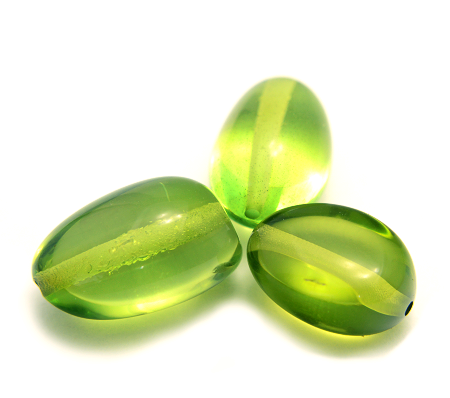If grateful humanity decides to erect a monument to a precious stone, then amber will take the first place in the queue for the pedestal. Because, at least, the acquaintance with electricity, without which there is nowhere, happened with the help of amber.
What color should the sculpture be carved in honor of the ancient companion of mankind? Honey, say adherents of the classic amber variety. Green, will be clarified by deep connoisseurs of beauty – and they will be right!
Green amber is rare and uniquely beautiful. But what kind of green amber are we talking about? Let’s try to figure it out.
Different greens of different amber
The lion’s share of amber mined in the Baltics, central and northern Europe is honey-yellow. In some cases, the mined stones turn distinctly green – retaining, however, a yellow or yellow-brown hue.
Mineralogists explain such color deviations by special conditions of “storage”. Some specimens of newly formed amber, on a whim of fate, fell into swampy water full of decaying organic matter. And they spent enough time in them for the interaction of tree resins with nitrogenous compounds.
As a result of slow natural nitrogenation, ordinary honey amber acquired the color of a dead grass. Such greens are far from emerald green, but greenish European amber is in demand: after all, they are beautiful, and even rare … Curious samples of fossil resins are mined on the island of Sicily. Most of them are red, some cast an obvious blue, sometimes with a noticeable green tint. Even more beautiful stones were once dug in the lignite deposits of Saxony: they were distinguished by their transparency and golden-green color. However, all European green amber “fade” before Dominican amber.
The most beautiful and expensive
Nature decreed that the tree resins, fossilized in the geological conditions of the island of Haiti, became similar to the marine environment. The massif of stone is similar in color and transparency to sea water. Frequent foreign inclusions imitate sandy mounds and bottom vegetation.
Some of the Dominican amber is more blue than green. But the most beautiful and most expensive are famous for their beautiful green color with a slight bluish tint. The cost of the best copies can be calculated in tens of dollars per gram.
Fortunately, local miners of green amber are not prone to handicraft damage to the stone, and they do not really like to grind gaudy figurines from precious materials. However, if you find yourself in the shopping streets of Santo Domingo, shopkeepers will try to foist you on stale illiquid assets. Feel free to bargain, dropping the price five to ten times, and then in any jewellery workshop in Europe, roughly hewn skulls and figurines of chimeric insects will be turned into decent cabochons by your order.
High price as an incentive for chemical creativity
Emperor Nero gave a young and strong slave for a small piece of green amber. Therefore, even in ancient antiquity, artisans got the hang of turning ordinary amber into the green. Most of the stones cracked from heating in unrefined olive oil, but the color of the amber shards changed to green.
A good effect is also observed with dry heating of amber under conditions of limited oxygen access. The heated stone is tightly wrapped in foil and placed in the oven. After processing, the amber becomes glassy and literally shines with a golden-green color.
To enhance the chromaticity, medieval craftsmen came up with the idea of processing the lower side of jewellery inserts hidden from the user with a dye paste. Green substrates for warm amber were also practised.
In modern conditions, green amber is produced everywhere. The difference in the chemical composition of amber mined in different deposits determines the variety of stone processing technologies. A multistage exposure is used in heated gaseous and liquid media. The saturation of fossilized resins with metal ions is carried out. Intense irradiation with a hard electromagnetic spectrum makes it possible to achieve the effect of luminescence in the thickness of the stone.
Researchers, however, note that the most attractive green color of amber is obtained not by the introduction of impurities, but by high-temperature exposure. Atomic aggregations arising under the influence of high temperatures change the light transmittance of the resins. The longest wavelengths (red) are absorbed, and the light passing through the array acquires a green tint.
Fully artificial imitations of green amber
Modern imitations of green amber are devoid of any disadvantages inherent in processed natural stone. If heated Baltic amber cracks with its characteristic internal “confetti” and acquires a rusty-green hue, then bernite and blizzard shine with emerald beauty, are distinguished by their strength and durability.
Constant replenishment of the market for polyester resins, cured with special additives or ultraviolet radiation, opens up great opportunities for green amber counterfeiters. Handicraft jewellery imitating green amber is becoming more and more perfect every year …

